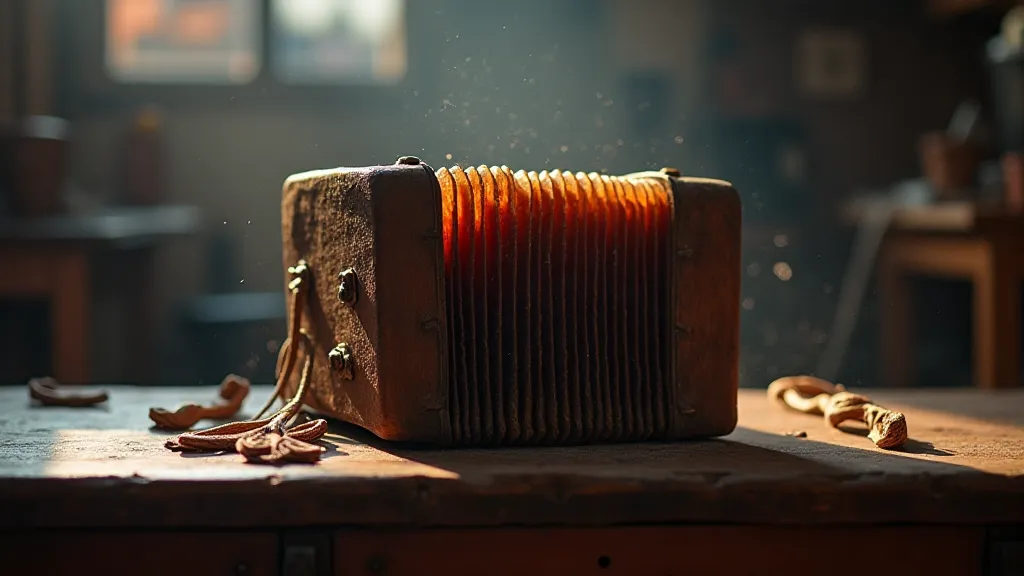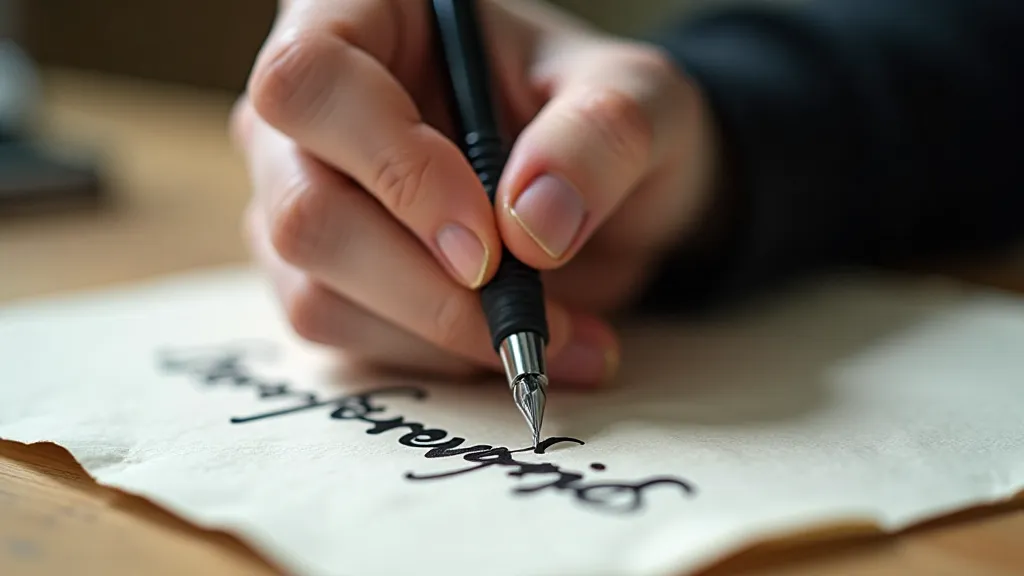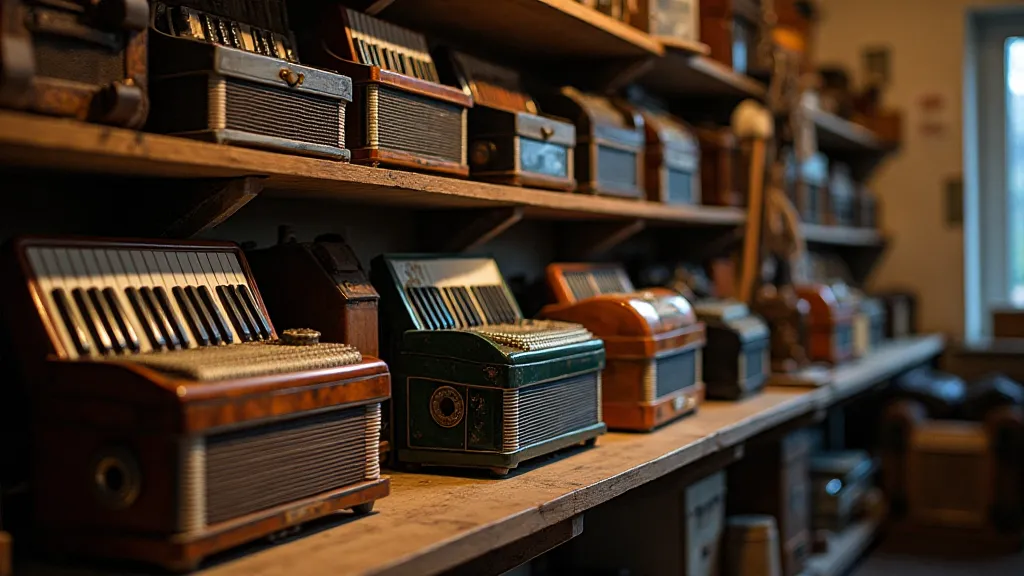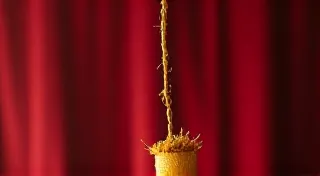The Lunar Embrace: Finding Your Calligraphic Rhythm Under the Left-Hand's Influence
There's a peculiar beauty in the quiet defiance of things that don't follow the expected path. Think of an antique accordion, its bellows whispering tales of forgotten dances, its keys a labyrinth of intricate mechanics. These instruments, often handcrafted with immense care and precision, represent a willingness to build something unique, something that resonates with a different kind of music. The left-handed calligrapher understands this feeling intimately. We operate against the grain, our movements mirroring a subtle inversion of the world around us. And within that inversion lies both challenge and a profound, often overlooked, strength.

The Left Hemisphere's Whisper: Processing and Perception
The science behind left-handed calligraphy isn’t complex, but understanding the subtle nuances of how the left hemisphere processes information offers valuable insight. The left hemisphere, dominant in most left-handed individuals, tends to favor analytical, sequential, and verbal processing. This can manifest in calligraphy as a focus on precise letter construction, a meticulous attention to detail, and a sometimes over-analytical approach. The constant need to adjust and compensate for the smudging, the awkward hand positioning – these aren’t simply technical hurdles, but reflections of how our brains interpret the task at hand.
Right-handed calligraphers often find a natural flow, a seemingly effortless connection between thought and execution. We, the left-handed, must actively create that flow. We've been conditioned, often unconsciously, to adapt, to adjust. This isn't a deficiency; it’s an opportunity. This capacity for adaptation, honed through years of navigating a world built for right-handed individuals, can be channeled into a unique calligraphic voice – one that is marked by sensitivity, depth, and a deliberate awareness of form.
The Smudge Struggle: A Left-Handed Lament
Let’s address the elephant in the room – the infamous ink smudge. It’s a constant companion, a persistent challenge that defines the left-handed calligraphy experience. Why does it happen? The fundamental problem lies in the angle of approach. We write from left to right, moving our hands across the page, inevitably dragging the freshly laid ink. This creates a smear, blurring the lines and often leading to frustration. There's a certain melancholy that settles in when a painstakingly crafted letter is marred by a tell-tale smudge – a feeling that echoes the quiet resilience required to persevere.
The simple act of correcting this requires a constant stream of micro-adjustments. It’s a dance of observation and correction. This isn't necessarily a disadvantage. The need to be acutely aware of the ink's behavior, the paper's texture, and the angle of the pen fosters a deeper understanding of the materials. Right-handed calligraphers often take these aspects for granted, but for us, they are integral to the process.
Tools of the Trade: Adapting and Innovating
Finding the right tools is paramount. While the standard calligraphy pens and inks work, modifications are often needed. A slightly wetter ink, a smoother paper (one that allows the ink to flow freely without excessive absorption), and a less angled writing posture can make a world of difference. Experimentation is key. There’s a certain satisfaction in discovering a tool, a technique, that finally mitigates the smudge, that unlocks a smoother, more enjoyable writing experience.
Consider angled pens – designs specifically created to allow left-handed writers to approach the page at a more comfortable angle. Some calligraphers even create their own custom tools, reflecting the unique needs and preferences born from years of grappling with the smudge. This spirit of innovation and adaptation is a hallmark of the left-handed calligraphy community – a testament to our willingness to find our own path.

Beyond the Struggle: Harnessing Left-Brain Strengths
While the smudge presents a challenge, the left hemisphere's strengths can be powerfully harnessed. The analytical focus can lead to exceptional precision in letterforms. The attention to detail can result in incredibly intricate and beautiful calligraphy. The ability to adapt and compensate can foster a unique, expressive style. Don’s view left-handed calligraphy as a handicap, but as an opportunity to cultivate a different kind of artistry.
Think of the artisan meticulously restoring an antique accordion. It's not simply about repairing the instrument; it’s about understanding its history, appreciating its craftsmanship, and breathing new life into a piece of art. The left-handed calligrapher approaches their craft with a similar mindset – a deep appreciation for the materials, a meticulous attention to detail, and a willingness to embrace the challenges that shape their unique artistry.
Finding Your Rhythm: A Calligraphic Journey
The journey of a left-handed calligrapher is a deeply personal one. It’s a process of experimentation, adaptation, and self-discovery. There will be moments of frustration, moments of triumph, and countless opportunities to learn and grow. Embrace the smudge, understand its origins, and use it as a guide to refine your technique. Cultivate your left-brain strengths – your analytical focus, your attention to detail, your ability to adapt. And most importantly, find your own calligraphic rhythm – a rhythm that resonates with your unique perspective and celebrates the quiet defiance of writing against the grain.
There’s a certain pride in knowing that you’re part of a unique community – a community of left-handed calligraphers who understand the challenges, celebrate the triumphs, and share a deep appreciation for the art of writing against the world. It’s a community forged in the shadow of the smudge, a community that understands the beauty of embracing difference, and a community that believes in the power of finding your own voice, even when writing against the grain.






